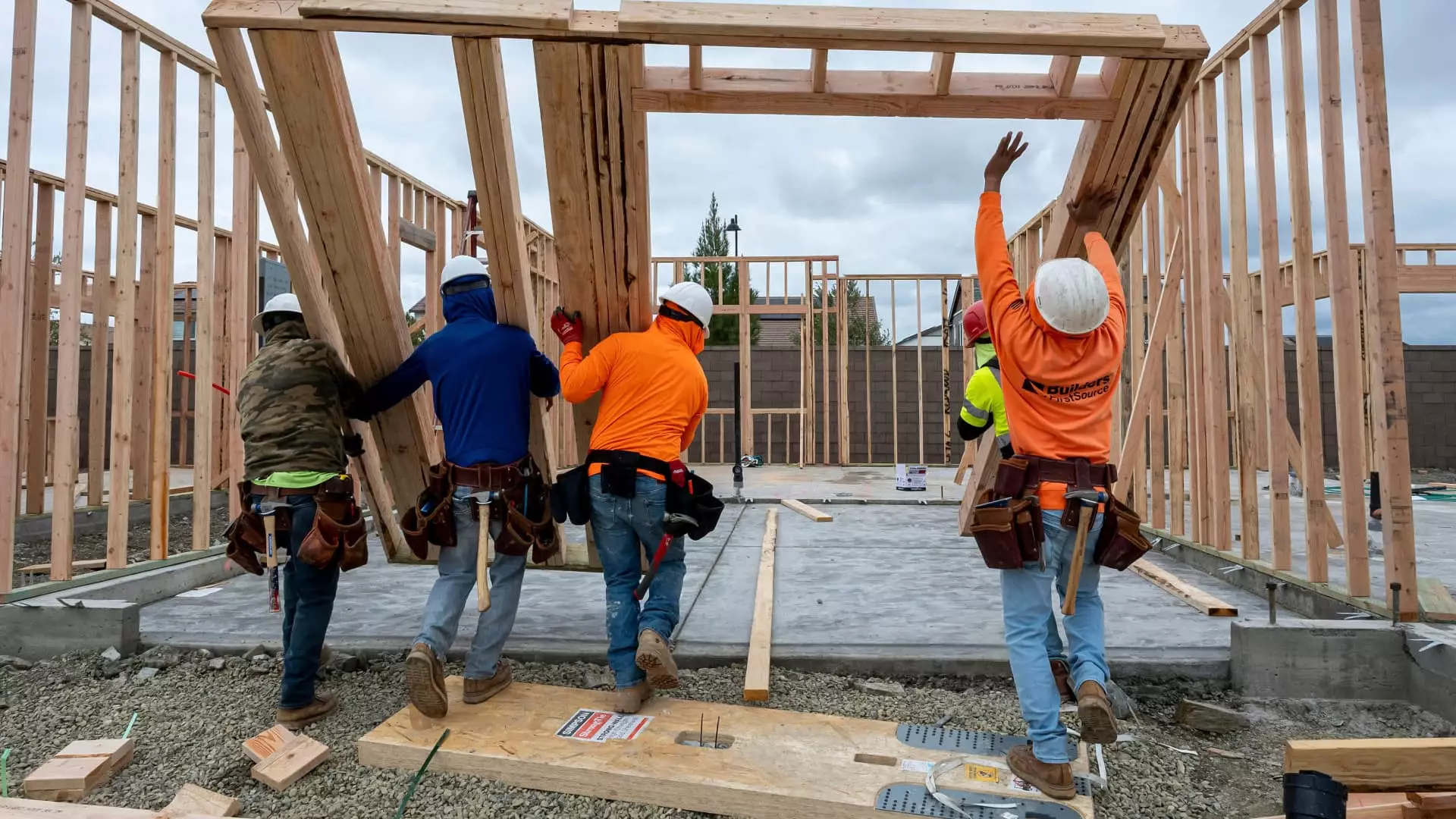The American housing market is currently navigating treacherous waters, as mounting mortgage rates and an unpredictable economy have plunged builder sentiment to worrisome levels. In June, the National Association of Home Builders/Wells Fargo Housing Market Index (HMI) recorded a drop to 32, a score that is undoubtedly alarming for an industry that thrives on optimism and growth. A reading below 50 signals significant malaise, and it’s telling that even inspiring shifts in tariff policies and regulatory adjustments haven’t managed to ignite consumer confidence. When one reflects on the historical data, it’s clear that this scoring marks one of the lowest points since 2012, solely surpassed by two other periods of turmoil. The alarming trend exemplifies a significant disconnect between the market recovery narrative and the realities facing builders and prospective homebuyers.
The Buyer Exodus: A Growing Hesitance
Uncertainty has become the new norm for consumers contemplating home purchases. The rising mortgage rates have shackled potential buyers, forcing many to reevaluate their aspirations. In fact, builder enthusiasm is similarly waning, as evidenced by the HMI report’s concerning component breakdown. Current sales conditions slipped to 35, and sales expectations for the next six months also displayed a lack of faith, plummeting to 40. Most alarming is the drop in buyer traffic, which fell to a mere 21, indicating that homes are becoming less of an attractive proposition. This hesitance isn’t merely anecdotal—it’s a reflection of an overarching trend where buyers are carefully assessing the ramifications of long-term financial commitments amidst turbulent market conditions.
The Builders’ Struggle and Price Reductions
In an effort to revive interest, many builders are reluctantly compelled to offer significant price reductions. According to the latest data, 37% of builders reported cutting prices—an unsettling high since tracking began three years ago. While the average reduction of 5% might seem inconsequential to those not actively engaged in the market, it speaks volumes about the current climate. For builders, it’s a battle to maintain market share and operations while grappling with rising inventory and lackluster demand. The fact that weekly mortgage rates remain prohibitively high only exacerbates the struggle, creating a vicious cycle where stagnant sales result in price drops, leading to instability across the sector.
Impending Consequences for the Future
The economic repercussions pose a significant threat to the stability of homebuilding in America. Robert Dietz, the NAHB’s chief economist, has vocally expressed concerns regarding the future of single-family housing starts, predicting a decline in 2025. This forecast is concerning for several reasons—not only does it suggest the worsening of current conditions, but it also reinforces a narrative of stagnation that could discourage investments in new projects, potentially stifling economic growth in the long run.
The impact reverberates across various facets of the economy. Builders like Lennar are feeling the pinch as well, revealing a staggering 9% fall in average home prices throughout the second quarter compared to the previous year. Such variations lead to hesitance in new orders and decreased deliveries, symbolizing a profound disconnect between builders and an elusive demand with consumers wary of engaging in the marketplace.
Regional Disparities: A Fragmented Market
Regional data paints an even more complex picture of the industry’s state. The South and West are showing the most significant declines in builder sentiment, areas typically regarded as the beating heart of home construction. The clear implication is that what we are witnessing isn’t just a generalized downturn; it’s a fragmented market where certain regions face eclipsed buyer enthusiasm while others struggle to maintain equilibrium.
In the grand tapestry of the American economy, the housing market serves as a potent indicator of broader societal health. With leader sentiment slumping to a mere 32 and buyer interest fading into the background, the stakes couldn’t be higher. It’s a precarious time for builders, buyers, and the economy alike—one that demands urgent attention and action if we are to stave off a larger-scale crisis.


Leave a Reply